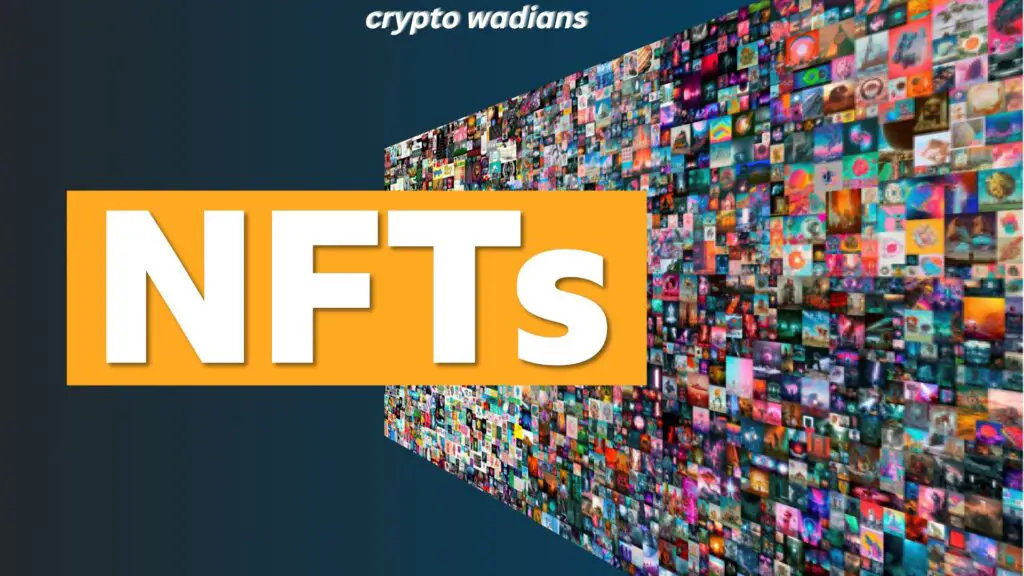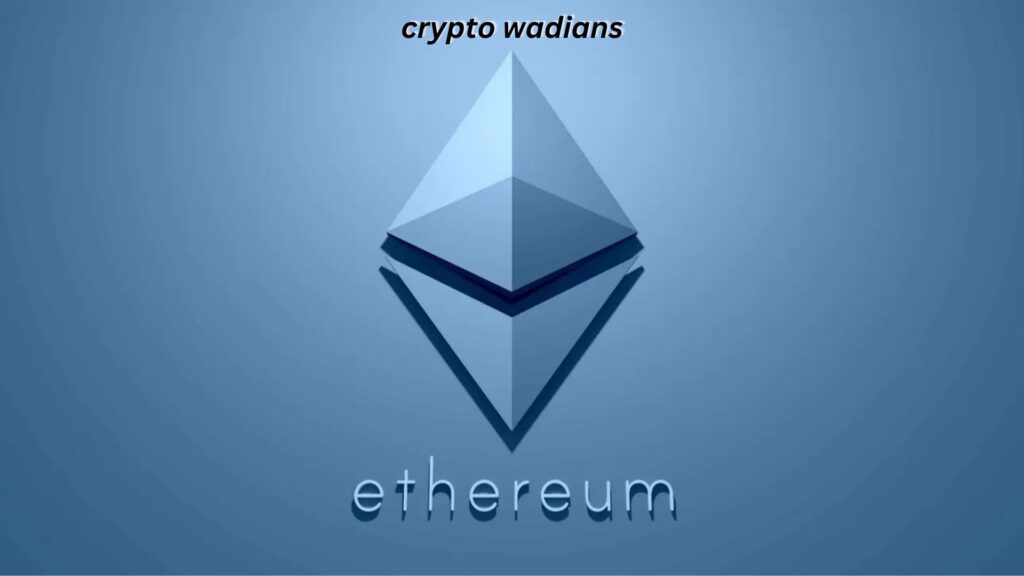What is an NFT? Non-Fungible Token Explained
Any digital token that symbolizes a distinct asset might be considered an NFT in the context of blockchain. An NFT is not transferable, in contrast to cryptocurrencies, which are fungible tokens that may be traded for any other token of the same kind.

What Does Non-Fungible Mean?
NFTs have the power to completely change the real estate, art, and online gaming industries. CryptoCelebrities, CryptoKitties, and Gods Unchained are among the games that are setting the standard for NFT usage in esports and gaming. NFTs can be applied to a variety of real estate-related tasks, including as managing rental agreements and tokenizing properties for fractional ownership.
The adoption of blockchain technology in the art industry has been slow, despite the ongoing work of several NFT projects to tokenize art. The practical uses of NFTs become even more exciting when you consider how they may be integrated with other technologies. With NFTs, “token ecosystems” can be established. This suggests that you may use NFT to create an ecosystem or network of tokens that interact with each other in new ways and that you can switch between tokens to complete a given transaction.
The Basics of Non-Fungible Tokens
While all tokens hold value, non-fungible tokens are particularly noteworthy due to their restricted supply. The unique Mona Lisa is an example of a non-fungible asset. Another example of a non-fungible token is a concert ticket. Since there are multiple tickets available and they can only be used once, they are considered non-fungible.
A commodity is fungible, to put it simply, if two or more of the same kind can be used in place of one another. Stated otherwise, the value of a single unit of a particular commodity is equal to that of a double unit of the same product. One barrel of crude oil, for example, will always be worth the same amount as any other barrel. They are interchangeable, or fungible.
Non-fungible assets, on the other hand, are portions of a commodity that are non-transferable. For instance, since there are no further copies of Charles Darwin’s “On the Origin of Species” first edition accessible, each original copy of the book is non-fungible.
What is NFT
A particular kind of digital token with a distinct and limited value is called a non-fungible token (NFT). This implies that every token is distinct and cannot be used in conjunction with any other token. NFTs are not exchangeable for other goods, but personal finances and financial instruments such as stocks have varying degrees of fungibility based on the characteristics of the particular security in issue.
Any digital token that symbolizes a distinct asset might be considered an NFT in the context of blockchain. An NFT is not transferable, in contrast to cryptocurrencies, which are fungible tokens that may be traded for any other token of the same kind.
Typically, NFTs are used as digital copies of physical goods like books, artwork, digital files, rare collectibles, or real-world assets. These digital assets could not be tracked, verified, or owned transferred in a tamper-proof way prior to blockchain technology. But with the aid of these tokens, this is now possible.
In essence, an NFT is a way to symbolize a digital asset that has been added to a blockchain. In order to accomplish this, a single token is created to represent each item, and it is then marked as non-fungible. Because each token is unique, this technique can be used to monitor inventories and the provenance of pricey digital products such as artwork or rare items.

How do NFTs work?
NFTs are often built on top of the Ethereum blockchain, and most smart contracts designed for NFTs follow the ERC-721 standard. Think of this standard as the “Token Bible,” which many NFTs follow. Based on the ERC-721 standard, CryptoKitties is one of the first applications of Non-Fungible Tokens that has been successful.
Like many cryptocurrencies, NFTs come with a matching ledger that provides information about token ownership and transactions. The ledger, which is stored on a blockchain, contains information on each token’s distinct characteristics. The ledger record for each token is available to all participants, while the data is encrypted to protect the confidentiality of the persons involved in the transaction.
How are NFTs Used?
NFTs are useful in a variety of contexts. Keeping track of the production, ownership, and value of physical items, medical information, and limited edition artworks are a few examples.
One sector that would profit immensely from non-fungible tokens is the art world. Many digital artists produce limited edition pieces and maintain records of their work. It can be challenging to remember who owns what, though. By establishing an ownership record for every piece of art, the blockchain can assist in this by tracking the authenticity and worth of the piece over time.
NFTs in Virtual and Real World
NFTs can be employed with a wide range of real-world and virtual elements. Real-world assets such as tangible artwork, jewelry, and even real estate can be tokenized and represented by an NFT.
Unique pieces of art, music, poetry, video game levels, or even physical works of art can all be considered tokenized virtual products. The potential applications for NFTs are practically endless. NFTs are often associated with blockchain-based games since they may be used to represent in-game assets. If an NFT project features a specific in-game object, it’s always unique. This might ensure that every player gets the exact in-game item they paid for and significantly lower cheating.
Why Non-fungible Tokens (NFTs) are Important
The ability of a non-fungible token to represent something other than a conventional financial asset or personal money is one of its most significant features. In the banking industry, for instance, a tokenized uncommon digital artwork is not typical. Non-fungible tokens are used to represent anything and can be used in any scenario where ownership, authenticity, or other criteria need to be tracked.
Although fungible tokens are significant, their sole function is to serve as a store of value. Similar to Bitcoin and Ethereum, tokens have a finite supply and are fungible. They are convertible into other tokens of the same kind. Conversely, non-fungible tokens are invariably distinct in some manner.
Who’s Using NFT?
Numerous firms are starting to experiment with non-fungible tokens as you read this. Still, there isn’t a clear road for acceptance, and technology in the digital economy is still in its infancy. What can we accomplish with NFT at this point is the main question on everyone’s mind. Looking at several examples is one of the greatest ways to gain a sense of the potential applications of NFT.
- The largest online art marketplace in the world is called Artsy. After utilizing blockchain technology for many years, the organization is currently experimenting with non-fungible tokens. Through Artsy’s platform, users may purchase and sell NFT projects and artwork online. Non-fungible tokens are used to monitor provenance and validate the legitimacy of digital artwork.
- Codex is a decentralized title register designed to increase collectibles and art projects’ openness. In order to establish a decentralized registry of artwork and rare collections, together with their owners, the firm has teamed up with a number of significant museums.
- A decentralized data exchange called Ocean Protocol enables researchers to work together, publish, and get compensated for their efforts. The startup has developed a blockchain-based digital asset marketplace that enables scientists to tokenize their data.
- DADA is a decentralized gallery that sells and promotes digital art via blockchain technology. The platform enables artists to track, sell, and trade non-fungible tokens (NFTs), or copies of their creations, as a means of representing their work.
Limitations of NFTs
When employing non-fungible tokens, there are a few limitations that you should be aware of. First, it could be essential to merge a non-fungible token with a fungible token (like Ethereum or EOS) in order to provide the necessary functionality.
Another issue is that non-fungible tokens are unlikely to become industry norms for many years. If governments wished to see a higher adoption of NFT, they would have to reconsider and clarify their positions on cryptocurrencies. Businesses would need to be informed about the benefits of blockchain technology and have the technical know-how necessary to implement it. Finally, anyone who wish to use the technology must be able to do so.




